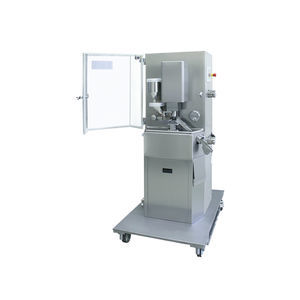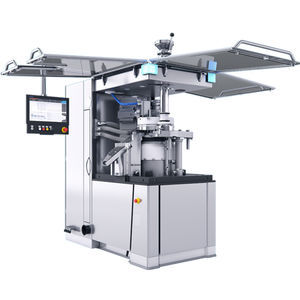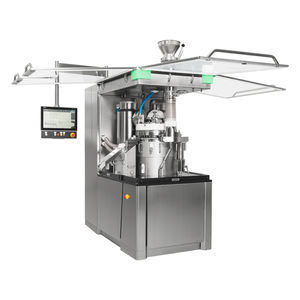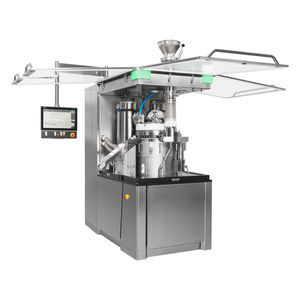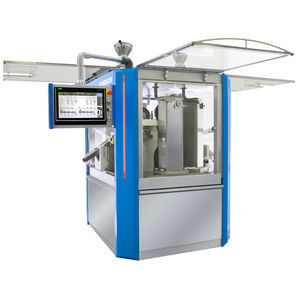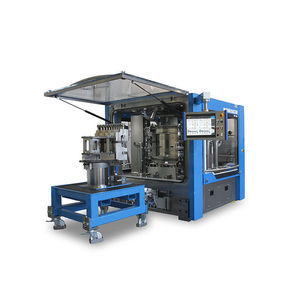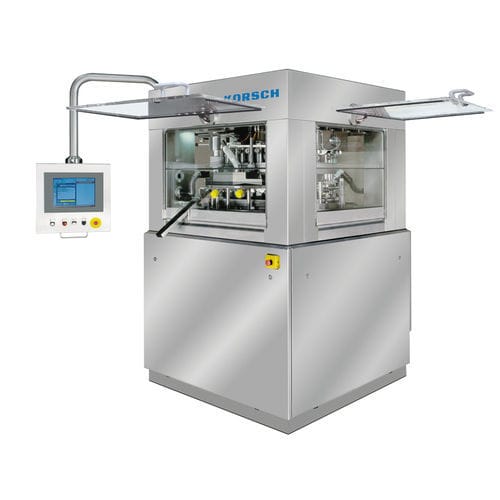
Tablet press TRP 700for the pharmaceutical industryR&Dsampling






Add to favorites
Compare this product
Characteristics
- Applications
- for tablets, for the pharmaceutical industry, R&D, sampling
- Other characteristics
- rotary, high-speed, double-sided
Description
With a press force capability up to 120 kN the TRP 700 offer a rugged, flexible, and advanced design that supports single-layer, multi-layer, and ringed formats. The tool holders with double guide rollers, ensures smooth punch travel and no wear on the punch heads or cams. Build for continuous 24/7 operation, the TRP 700 has proven to be effective across a wide range of formats and applications, delivering excellent product quality and unparalleled uptimes.
ROBUST DESIGN
Technical rotary presses must be workhorses – in the most demanding environments, they must be productive, efficient and extremely reliable. They are frequently used to process aggressive or abrasive materials, and very large formats.
SUPERIOR OUTPUT
The maximum output is 198,000 tablets per hour at 30 RPM. The TRP 700 is clearly intended for continuous, high-speed production, and is designed to operate a minimum of 160 hours without any significant maintenance or service.
MULTI-LAYER CAPABILITY
The TRP 700 can be delivered as a multi-layer rotary press for bi or three-layer tablets, with:
Low tamping force measurement and control capability for multi-layer formats
On-demand layer sampling at production speeds
Absolute separation of layers – closed feeder design
Dust extraction to prevent cross contamination
PRESS TOOLS
The punches are roller guided on both sides and shafts with patented heavy duty profile heads permit extremely high loads and eliminate wear on press tools and compression rollers.
Catalogs
TRP 700/900
12 Pages
KORSCH_Technical_Line_EN_2020
18 Pages
Related Searches
- Tablet press machine
- Press for the pharmaceutical industry
- Rotary press
- Production press
- Double-sided press
- High-speed press
- R&D press
- Single-sided press
- Single layer press
- Press with touchscreen
- Double-layer press
- Compactor for the pharmaceutical industry
- Containment press
- Filling press
- Sampling press
- Triple-layer press
- WIP press
- R&D compactor
- Multilayer press
- Production compactor
*Prices are pre-tax. They exclude delivery charges and customs duties and do not include additional charges for installation or activation options. Prices are indicative only and may vary by country, with changes to the cost of raw materials and exchange rates.




